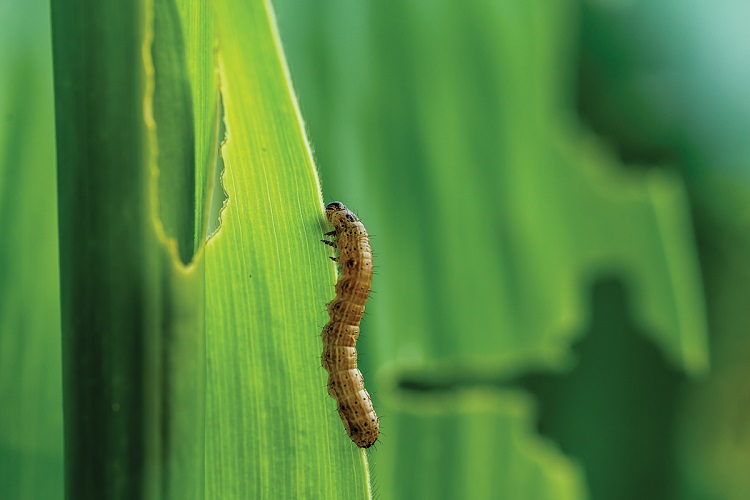In 2016, scientists found fall armyworm in West Africa. Soon it spread across the continent, where it is present in at least 18 countries to date. However, it didn’t stop there, and last year it was found in East Asia with fear of a similar spread.
The pest is not a ‘worm’ at all but actually a moth species and a major threat to agriculture, with the caterpillars feeding on nearly 100 different species of plant and causing losses of up to a third of staple foods such as maize in some  countries. The pest first arrived from the Americas, where, although a significant problem, it is better regulated by the local predators and pathogens.
countries. The pest first arrived from the Americas, where, although a significant problem, it is better regulated by the local predators and pathogens.
One of the pathogens that naturally controls the pest is fungi which, while harmless to humans, will infiltrate the defences of the caterpillars and reproduce inside them releasing toxins in the process. When the fungi have killed the caterpillar host, they will develop spores ready to be picked up by another unsuspecting caterpillar. Unfortunately for farmers, the pest appears to have arrived without its antagonists.
Working with partners in the affected areas, a team at NRI is looking at finding ways that farmers could introduce these fungi, and potentially enhance their speed of action by combining them with other natural products. The Chemical Ecology team at NRI received fall armyworm specimens in China, which had been collected by project partners from fields in Fujian province where the pest is a growing problem.
The team brought the specimens back to the NRI laboratory where they have since been successfully reared. Experiments are now commencing to see which fungi the armyworm succumb to and how best to integrate this into a sustainable solution for growers.
To find out more about:

